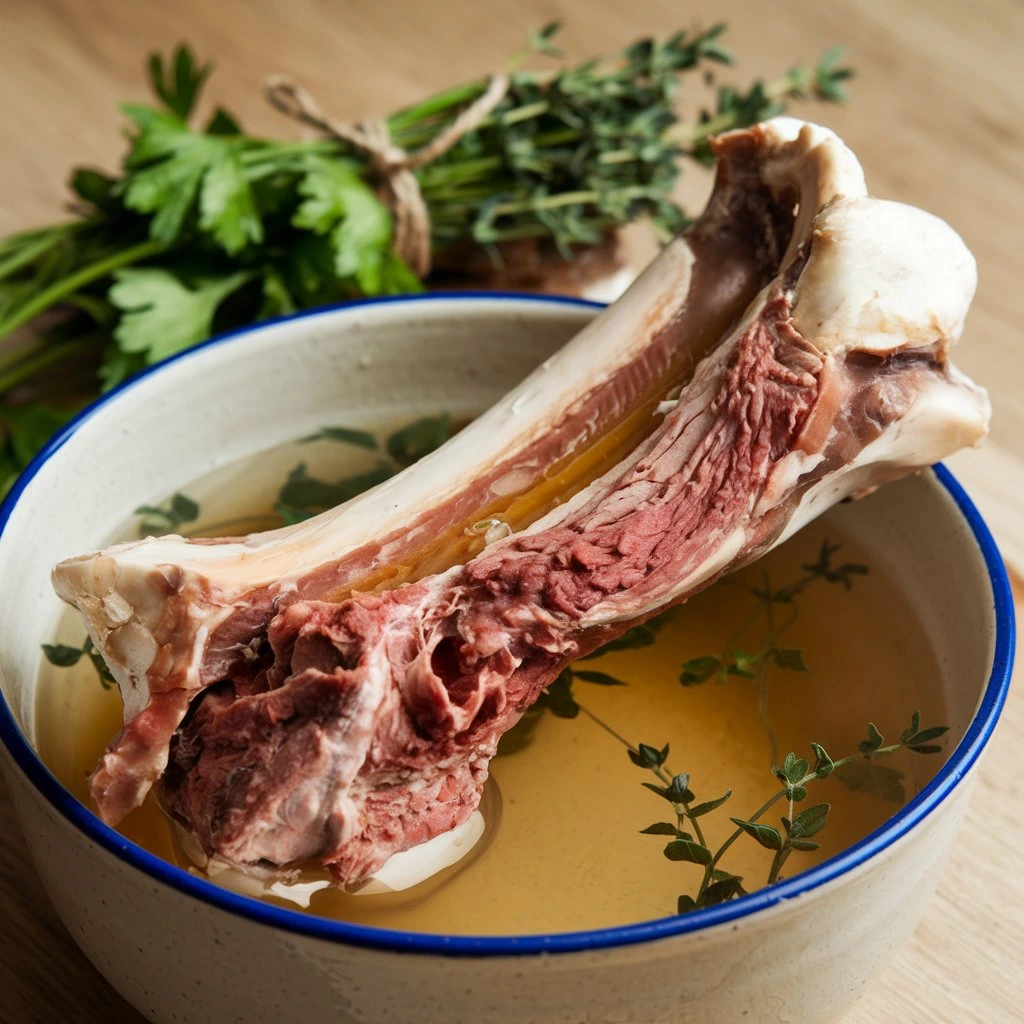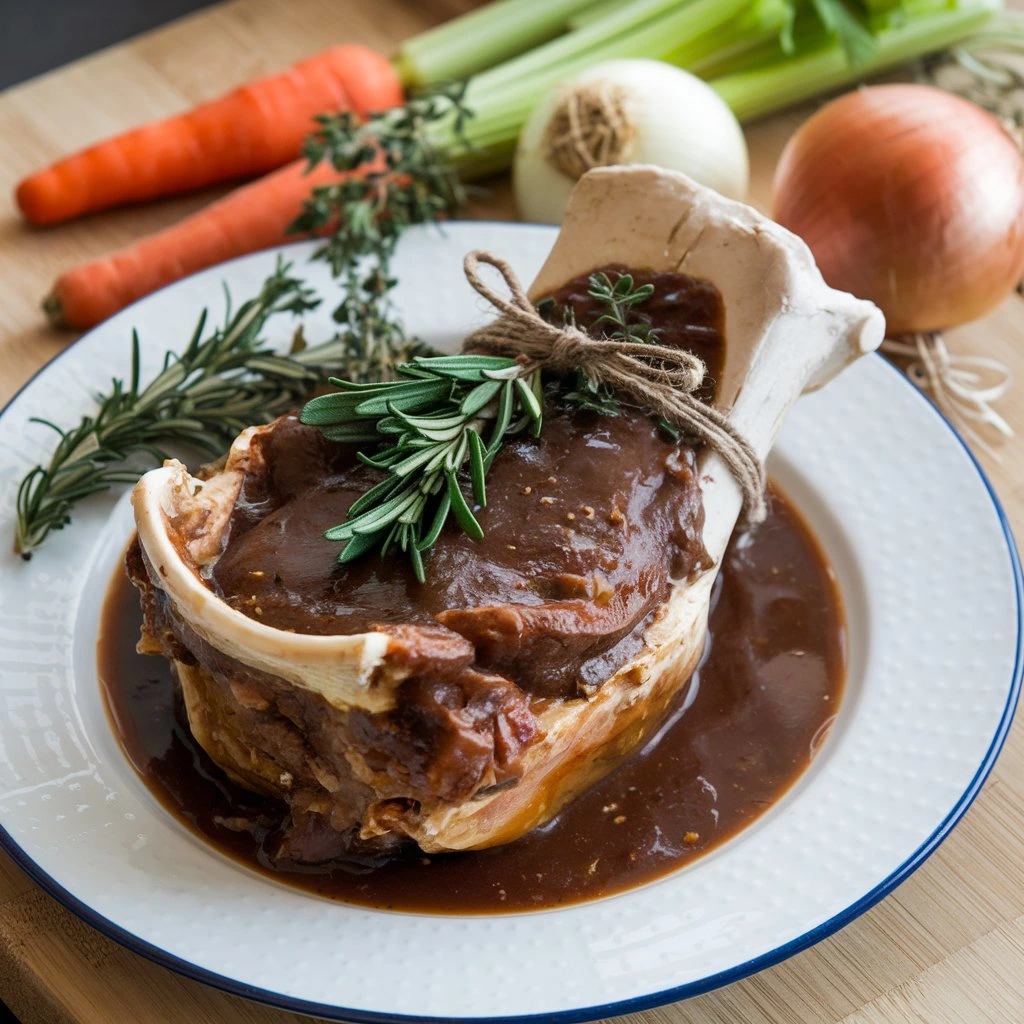Everything You Need to Know About Soup Bone
Soup bone is the secret ingredient that transforms ordinary dishes into extraordinary culinary experiences. Known for its ability to create rich flavors, nutrient-packed broths, and versatile stocks, a soup bone is a cornerstone of countless recipes. This humble bone holds the key to unlocking deeper tastes and a wealth of nutrients like collagen, gelatin, and essential minerals that benefit overall health. Whether you’re crafting a hearty stew, a delicate consommé, or a restorative bone broth, a soup bone is indispensable in elevating your cooking. In this guide, we’ll dive deep into the world of soup bones, from selecting the best ones to preparing them for delicious meals.

What Are Soup Bone?
Soup bones are a cornerstone of traditional cooking, cherished for their ability to transform simple ingredients into deeply flavorful and nourishing broths. Often sourced from beef, pork, chicken, or lamb, these bones are not only a budget-friendly option but also a sustainable way to utilize parts of the animal that might otherwise go to waste. When simmered slowly, soup bones release minerals, amino acids, and natural collagen, creating a base that is both delicious and packed with health benefits, making them a staple in kitchens worldwide.
- Beef bones: Marrow bones, oxtails, knuckles.
- Pork bones: Ham bones and ham hocks.
- Poultry bones: Chicken carcasses and turkey bones.
These bones are not just by-products; they are essential in cuisines worldwide, offering both taste and nutrition.
For a deeper dive into the health benefits of bone broth, visit Healthline.
Types of Soup Bone
Beef Bones
- Marrow bones: Packed with rich, fatty marrow, these bones bring a luxurious depth of flavor and a velvety texture to broths, making them a top choice for indulgent recipes.
- Knuckle bones: Renowned for their high collagen content, knuckle bones are perfect for creating gelatinous, hearty stocks that add body and nutrition to soups and sauces.
- Oxtails: Combining a balance of tender meat and robust bone, oxtails produce a deeply flavorful broth with a richness that elevates any dish they are used in.
- 4o
Pork Bones
- Ham bones: Ideal for crafting smoky broths and hearty soups, ham bones are especially well-suited for bean-based dishes, adding depth and richness to classics like split pea soup or navy bean stew.
- Ham hocks: Known for their robust flavor, ham hocks are a staple in Southern-style cooking, enhancing dishes like collard greens, lentils, and slow-cooked stews with their savory, smoky essence.
Poultry Bones
- Chicken carcasses: These are lightweight yet packed with flavor, making them an excellent choice for creating light, aromatic stocks perfect for soups and sauces that don’t overwhelm with heaviness.
- Turkey bones: Larger and richer than chicken bones, turkey bones are ideal for repurposing holiday leftovers, providing a robust base for hearty broths and stocks that can be used in post-feast soups or stews.
Fish Bones
- Fish bones: While not as common, fish bones are perfect for creating delicate, quick-cooking broths that are ideal for seafood dishes, such as fish soups, chowders, or seafood risottos. Their light yet flavorful nature adds depth without overpowering the other ingredients.
Selecting the Best Soup Bone
When choosing soup bones, consider the following factors:
- Quality: Choose grass-fed beef, pasture-raised pork, or organic poultry for higher-quality bones. These options not only yield better flavor but also provide superior nutritional content, making your broths more wholesome.
- Freshness: Always buy bones from trusted sources such as local butchers or farmers, as fresh bones offer the best taste and nutritional benefits.
- Purpose: Select your bones according to the dish you’re preparing. For rich, gelatinous broths, opt for knuckle bones; for lighter stocks, poultry bones are the best choice.
Benefits of Soup Bone
Soup bones are more than just flavor enhancers. They’re packed with nutrients that support overall health:
Nutritional Benefits
- Collagen and Gelatin: These nutrients help promote joint health, improve skin elasticity, and support gut healing, making soup bones a valuable addition to a balanced diet.
- Minerals: Soup bones are rich in calcium, magnesium, phosphorus, and other essential minerals that contribute to strong bones, healthy muscles, and overall well-being.
Health Advantages
- Supports Gut Health: Gelatin in bone broth is a natural ally for gut health, helping to protect and repair the lining of the digestive tract. This benefit is especially valuable for individuals with conditions like leaky gut syndrome or inflammatory bowel diseases, as it aids in better nutrient absorption and overall digestive function.
- Anti-Inflammatory Properties: Bone broth is rich in amino acids such as glycine and proline, which possess anti-inflammatory properties. These nutrients can help reduce chronic inflammation in the body, speeding up recovery from illnesses, injuries, and intense physical activities while promoting long-term wellness.
- Boosts Immune System: Packed with nutrients like glutamine, zinc, and collagen, bone broth strengthens the immune system by supporting the gut microbiome, which plays a vital role in immunity. These compounds help the body fend off infections and recover more effectively from illnesses, making bone broth a powerful addition to a health-conscious diet.
How to Prepare Soup Bone
Preparing soup bones is an art that unlocks their full potential. Follow these steps for perfect results:
Roasting Bones
Roasting enhances flavor by caramelizing the natural sugars in the bones:
- Preheat your oven to 400°F (200°C).
- Arrange bones on a baking sheet.
- Roast for 20–30 minutes until browned and aromatic.
Simmering for Broth
- Place roasted bones in a stockpot or slow cooker.
- Add water, vegetables (onions, carrots, celery), and a splash of vinegar (to extract minerals).
- Simmer gently for:
- 12–24 hours for beef or pork bones.
- 4–6 hours for poultry bones.
- Skim impurities regularly for a clear broth.
Storing Broth
- Refrigerate for up to 5 days.
- Freeze in portions for up to 6 months.
Culinary Applications of Soup Bone
Soup bones are incredibly versatile, making them indispensable in various recipes:
Soups and Stews
- Use beef bone broth as the base for hearty vegetable soups or stews.
- Add pork bone broth to bean soups for smoky undertones.
Sauces and Gravies
- Enrich sauces and gravies with homemade stock.
Cooking Grains
- Cook rice, quinoa, or couscous in bone broth for added flavor and nutrition.
Tips for Making Perfect Bone Broth
Add Herbs and Spices
- Include bay leaves, thyme, and peppercorns for a fragrant broth.
Use an Acidic Medium
- A splash of vinegar or lemon juice helps extract minerals from the bones.
Skim Regularly
- Remove foam and impurities during simmering to achieve a clear broth.
FAQs About Soup Bone
What are the best bones for broth?
The best bones depend on your needs. For gelatin-rich broth, use knuckle bones or oxtail. For lighter stocks, use poultry bones.
How long should I simmer soup bone?
- Beef or pork bones: 12–24 hours.
- Poultry bones: 4–6 hours.
Can I reuse soup bone?
Yes, but subsequent batches will have less flavor and nutrients.
How do I store bone broth?
Refrigerate for up to 5 days or freeze for up to 6 months in airtight containers.
Conclusion
Soup bones are the ultimate kitchen staple, offering unmatched flavor, versatility, and nutrition. By incorporating homemade broths and stocks into your cooking, you can transform ordinary dishes into extraordinary ones. Explore the possibilities of soup bones today and unlock the full potential of your culinary creations!







